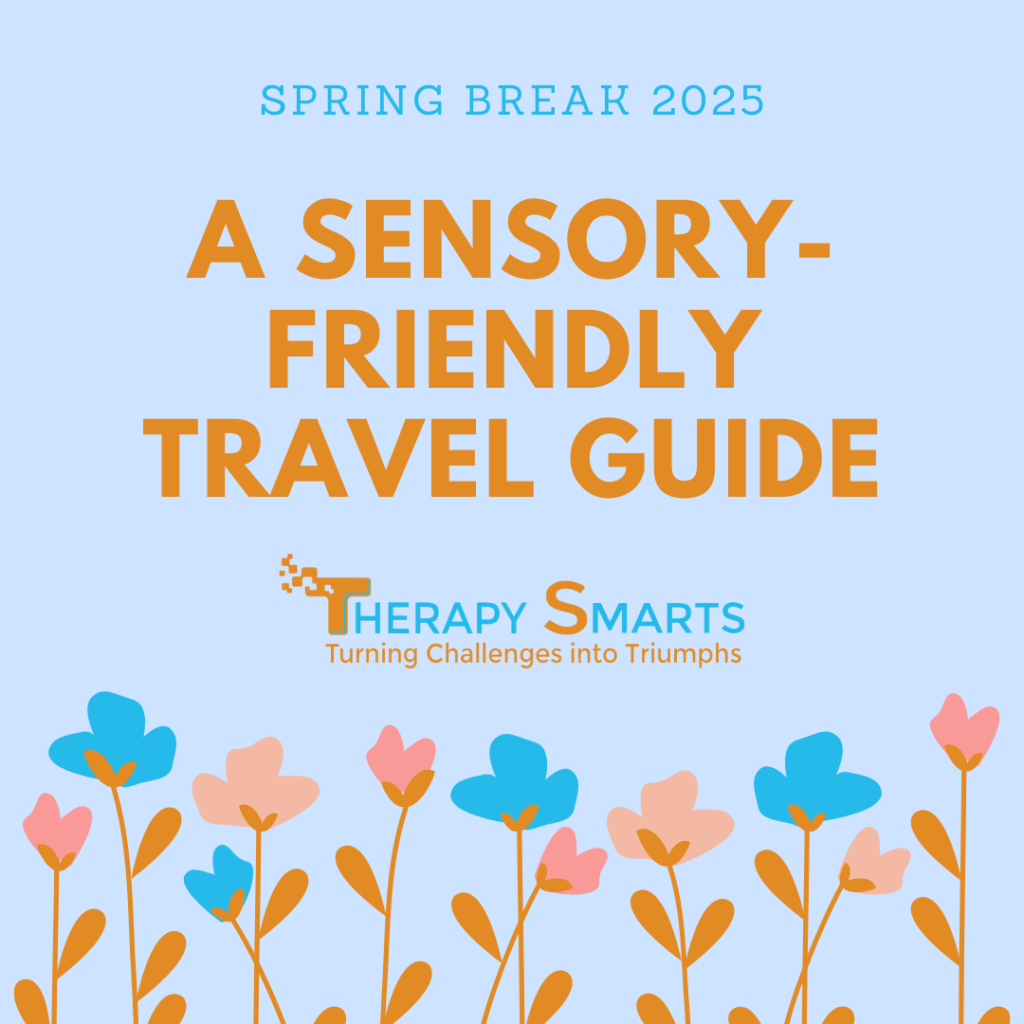
Smooth Sailing: A Sensory-Friendly Travel Guide for Families
By Team Therapy Smarts
Spring break is on the horizon! As you and your family prepare to hit the road or take to the skies, there are a lot of considerations to take into account, from travel times to how to keep young children busy. The act of traveling can have an additional dimension added when you have a child with sensory processing differences.
Today, team Therapy Smarts is here to provide you with our top travel tips to get you and your family to and from your exciting destination safely and happily.
What is Sensory Processing?
In a nutshell, sensory processing is how we interact, interpret and respond to the information we receive from one or more of our senses. Everyone has their own unique processing needs— we all have that noise or smell that we can’t stand. For kids with sensory processing differences they may demonstrate one of two patterns: over-stimulation or under-stimulation.
Over-stimulated kids receive too much input from their senses. They may have difficulty around crowds, avoid being touched or hugged, or have an increased number of tantrums and meltdowns in public. In contrast, understimulated children may be overly-active and energetic. They may prefer to seek intense movement like spinning or tight hugs, or perform tasks with too much force. No matter which side a child falls on, each will likely have different strategies to manage traveling, particularly during the busy spring break season.
Before The Trip
Vacations as a family rely on excellent planning — and with a few additional precautions to meet your child’s needs, you can make sure you’re prepared to meet their needs even before you’re ready to get on the road.
First, make sure that your child is wearing something comfortable during a travel day. If your child has sensitivities with light or sound, make sure that they have sunglasses or headphones to carry with them, if needed. Additionally, if your child tends to wander, you can make sure they have some kind of identification with them, such as a sticker or a bracelet.
Also essential to a successful travel day is avoiding two major meltdown triggers— hunger and boredom. Planning ahead with snacks and activities for your child can lead to a more comfortable travel experience for everyone. For snacks, make sure to pack bars high in protein, to keep kids full. It is best to bring a few non-electronic activities in case electronics run low on charge or batteries.
Relaxation & Routine
When it comes to the trip itself, it’s important to have a conversation with your children about what to expect in a new environment. Walking kids through every day of the vacation in advance can give them a good idea of how to prepare. You might even consider highlighting areas where your child may face difficulties — if they are old enough to self-regulate, it can be helpful to remind them of strategies that they can use when needed.
Try not to worry about sticking directly to your agenda. Things come up and sometimes it may benefit everyone to revert to routine, whether in the hotel room or a predetermined safe area, if regulating strategies are not enough.
Make sure that everyone on the trip is on board with the schedule. Whether you’ve brought along grandparents, or additional caretakers, giving your child a respite from parental supervision can be relaxing for both of you. Just make sure that everyone is aware of your child’s sensitivities and unique needs, in order to make these transitions as easy as possible.
Selecting a Sensory Toolkit
The final key to successful travel with a child with sensory sensitivities is ensuring that they have a sensory toolkit. This can include comforting toys or other items that control your child’s sensory experience to make things more tolerable for them. It can even be fun to work with your child in order to pack their bag before the trip commences.
Other ideas for what to include in your sensory toolkit may include:
Noise-cancelling headphones
Fidgit toys (silly putty, pop-its, fidget cubes. etc)
A weighted blanket or lap pad.
Good quality sunglasses.


